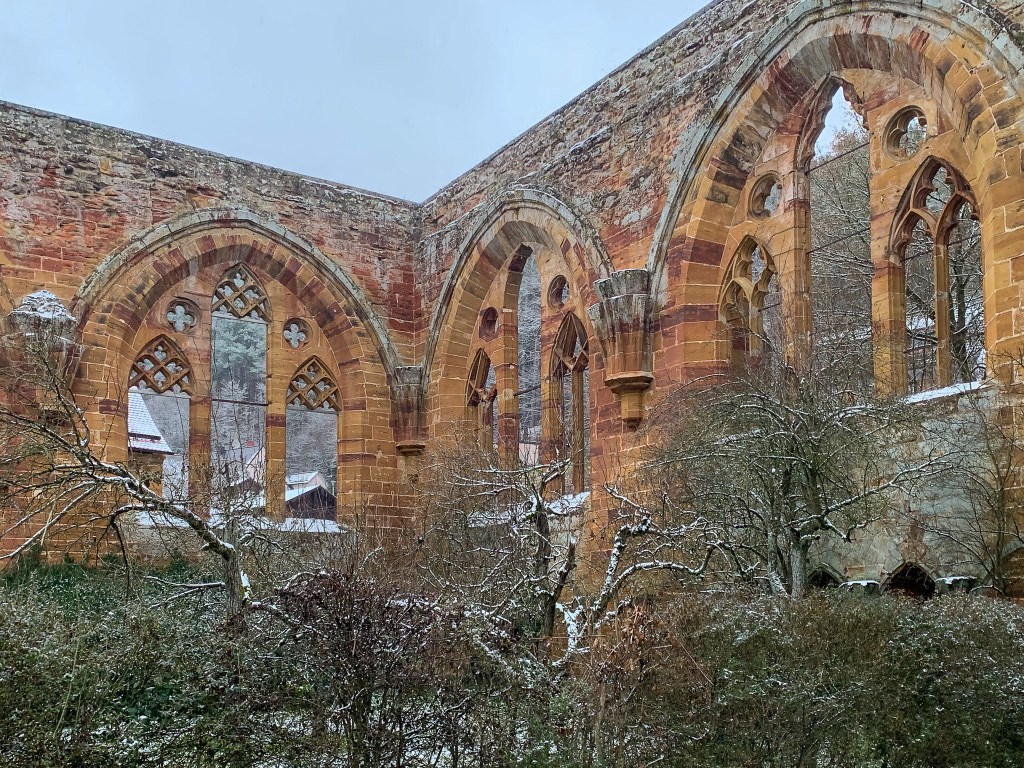
My last post was about my first attempts shooting with a 60 year old lens. For that The Significant Other and I took a short trip to the nearby ruins of medieval Gnadenberg Abbey. We’ve never been there before, despite it being only a 15 minute drive from our house. And it is much too beautiful not to share a few photographs and the history of this magic place with you…
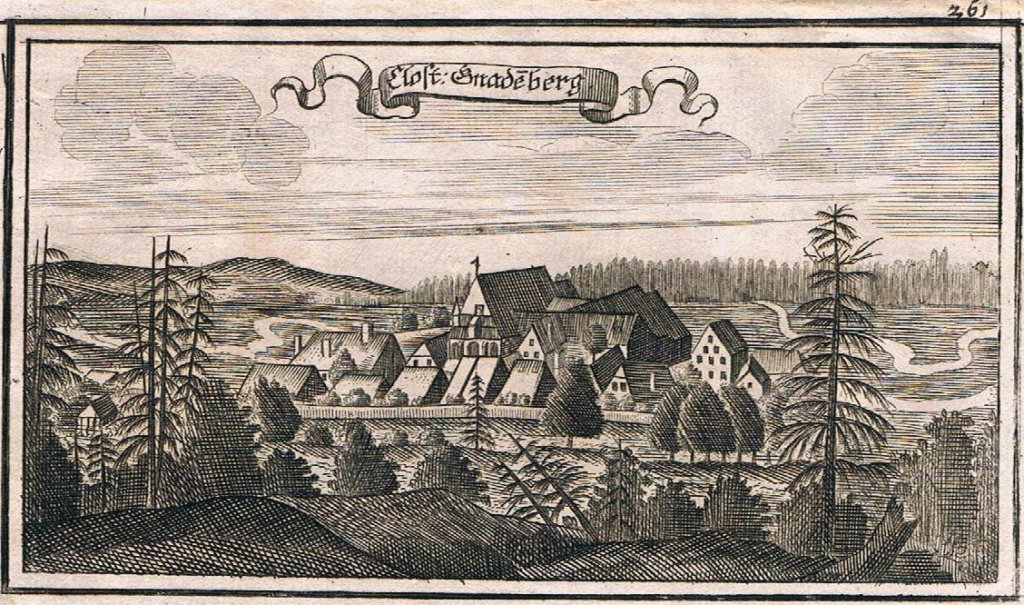
Gnadenberg Abbey is a former monastery of the Bridgettines, or Birgittines, a monastic religious order of the Catholic Church founded by Saint Birgitta, a.k.a. Bridget of Sweden, back in 1344 and approved by Pope Urban V. in 1370. It is situated half up a hill above the valley of the River Schwarzach east of the town of Altdorf near Nuremberg.
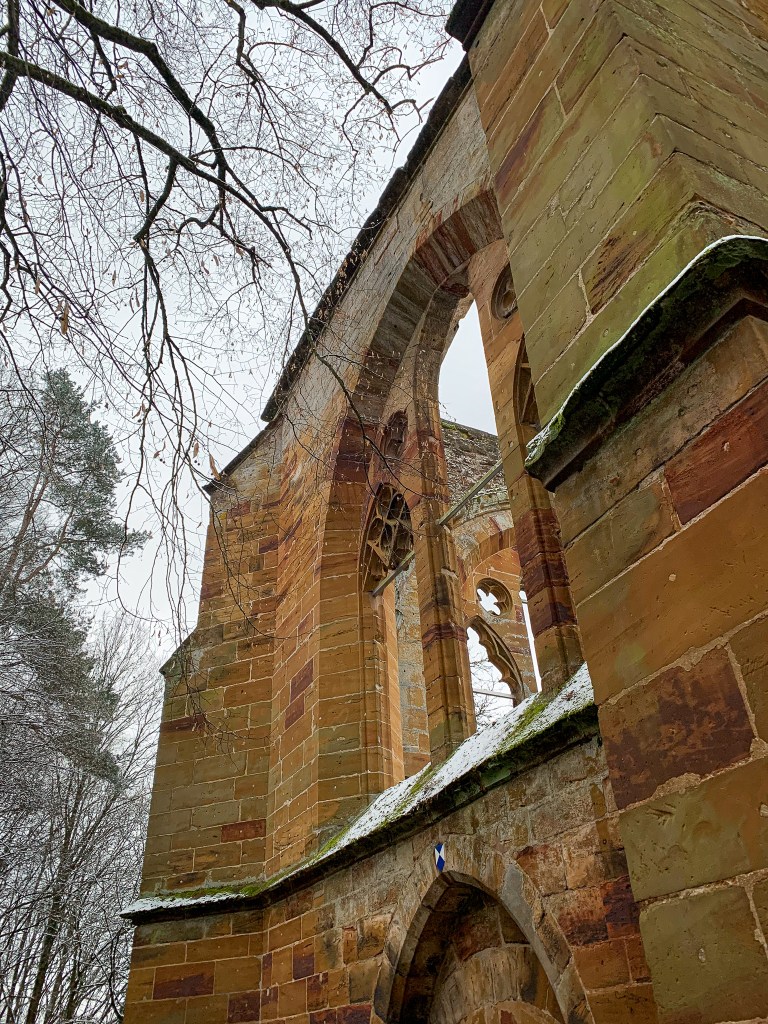
Gnadenberg was the first monastery of the Bridgettines in Southern Germany. It was founded 1422 by Count Johann I. of Neumarkt and his wife Katharina, who knew the order from Vadstena Abbey in Sweden, were she did spend her youth. The first nuns and their abbess Anna Svenson arrived in 1435 after construction was finished. In the second half of the 15th century Gnadenberg developed into a leading monastery of the Bridgettines under the abbess Elisabeth Volkenstaller (1451-1471).
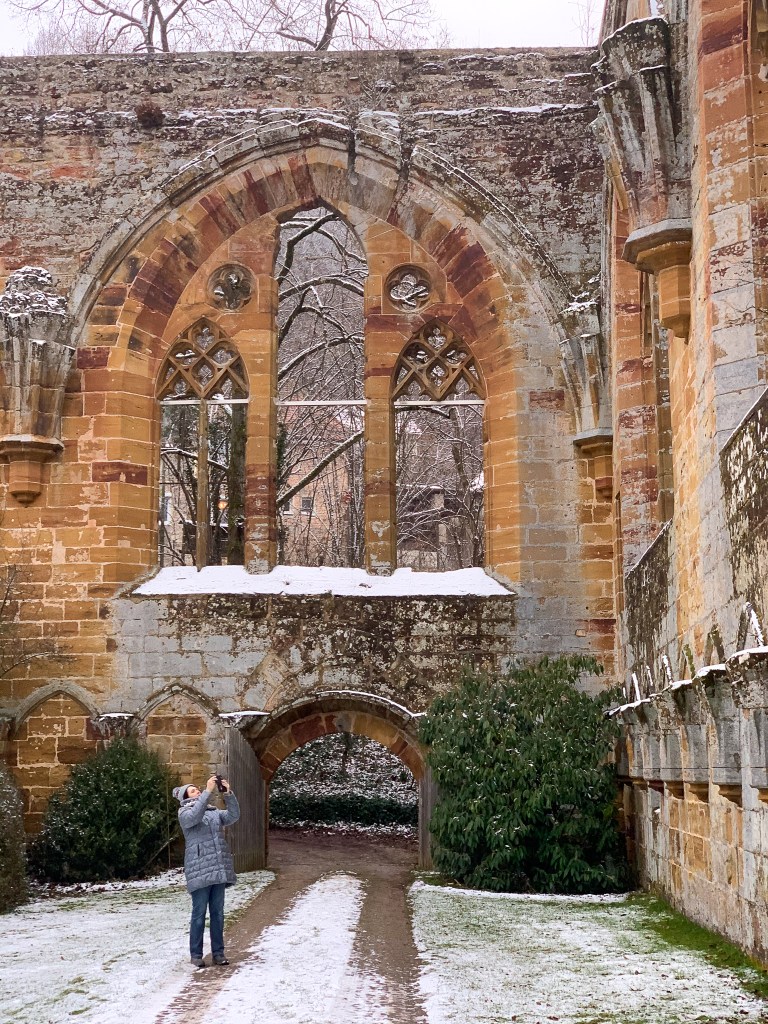
Construction of the big church started in 1451. The monastery church, which according to the regulations of the Bridgettines Order consisted of three naves of equal size and height, each with five vaulted bays of approximately square ground plan and an altar choir with 13 altars in the west. The floor area of the former hall church is a monumental 70 by 37 meters. It was consecrated on Pentecost 1483 by Bishop Kilian of Eichstätt.

The builders were all from Nuremberg, masters like Jakob Grimm (building plans and construction management), Eucharius Gaßner (carpentry) and Hans Frommiller (vaulting). Even Nuremberg’s Renaissance super star Albrecht Dürer had been commissioned with an expert opinion on the somewhat problematic, enormous roof truss of the monastery church. The church did not have a tower, but only a turret on top of the roof.
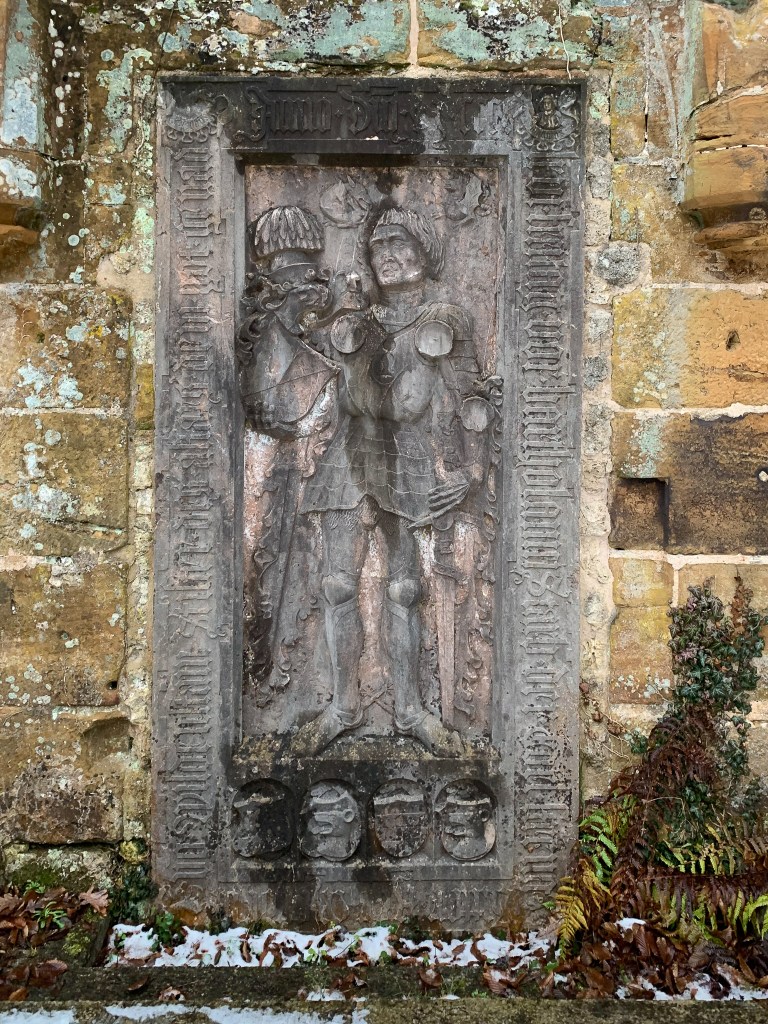
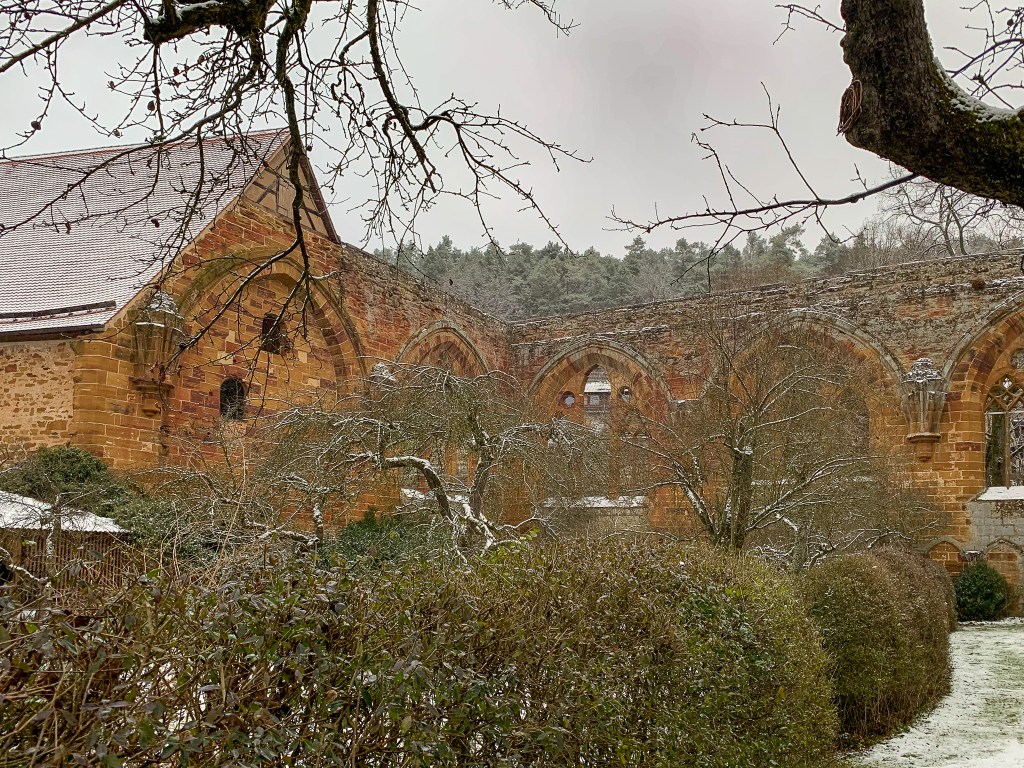
When around 1524 the Reformation was introduced in Nuremberg, which at the same time held the patronage over the monastery, the monastery went downhill, and when in 1556 Count Ottheinrich also introduced the Reformation in the Upper Palatinate, it was gradually dissolved. The last abbess was Ursula Breunin (1533-1558). The monastery was secularized in 1563; monastic operations came to a standstill in 1570. From 1577 the monastery estates were sold or given as fiefs.
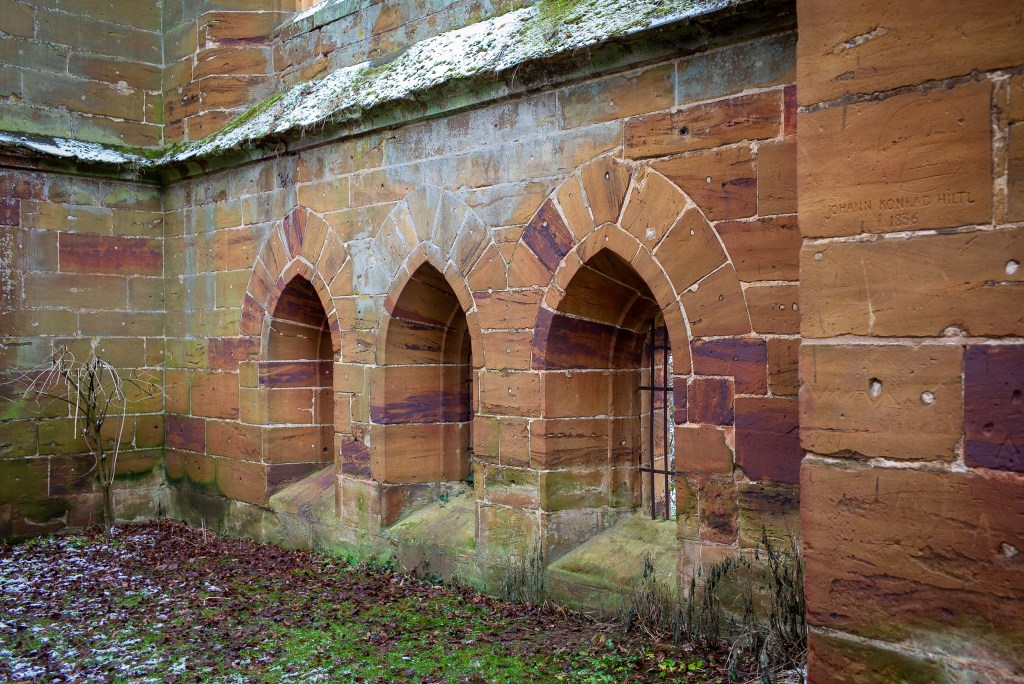
Finally, during the Thirty Years’ War, on April 23, 1635, Swedish troops burned down the church and parts of the monastery; since then Gnadenberg has been a ruin.

The ruins of the former monastery church impress with the monumentality of the still standing high outer walls made of light brown sandstone as well as with the Gothic tracery of its large-scale window openings.
I have to admit that my recent reading of Ken Follet’s new book “The evening and the morning” about the early life in Kingsbridge and Shiring with its abbeys (prequel to his “Pillars of the Earth”) also inspired me to finally visit nearby Gnadenberg, a truly fascinating place, still radiating its history.
It is a quiet place as well, secluded below the road of the little village. My Dad told me he passed by several times doing little road trips, but never noticed the ruins of a place that you would rather expect in England or Scotland, but not in a little village just around corner.
I hope you enjoyed this little trip back in history.
Wish you a great Friday!
Marcus
Related Posts:
Nuremberg Explored (8) – Martin Behaim
Nuremberg Explored (7) – Eppelein horse jump
You’ve captured it all so very, very well!
Absolutely stunning and now I can’t believe I never been there either. Thank you for beautifully capturing it for us. Hugs 🤗
Thanks for your kind words my friend! Let’s make this a week where we catch up! Hugs!
Hey there. Kind of a crazy week for me and a stormy week ahead. Can we make it next week? I’ll
Reach out to let you know when. Maybe Monday? Have a good one my friend. Big hugs 💙
Now I’m having a crazy week, but it will be much better next week 🙂 We’ll make it!
No worries and take it easy. We will catch up.
Great photos – and enjoyed the info
Thanks, Diana, so much appreciated! Marcus
Your photos are wonderful – I can see that you were inspired. That dusting of snow added to the atmosphere, too.
Thanks, Lynn, I’m glad you liked the post! Marcus
That’s a beautiful trip back to history, Marcus, along with your crisp winter images. I have only seen an abbey like this many years ago in Italy.
This must have been an impressive monastary during de Middle Ages. Thanks for sharing these magnificant pictures as wel as the detailed story of the abbey.
Glad you liked the post! Thanks for reading and commenting! Have a great week! Marcus
What I feel when I look at this photo: Wistful (adjective)
…..having or showing a feeling of vague or regretful longing: a wistful smile. Something lost.
Thanks for your beautiful comment! Fits perfectly! Marcus
Beautiful architectural shots and interesting history, Marcus. Glad you finally visited! Happy New Year to you and yours.
Thanks, Jane, so much appreciated! Have a great week! Marcus
Wonderful!
Thanks, Jack, so much appreciated! Marcus
Oh, I most certainly enjoyed this trip back in time. To me it is most impressive that the ruins have survived with little degradation and no maintenance since 1635 for crying out loud! What a testament to the masons and other craftsmen of the day. A wonderful gallery you have given us.
There you made a good point, Maj. The craftsmanship 400 years ago was just amazing! Thanks for taking the time to read and comment! Have a great week! Marcus
Amazing history and architecture! Have a good weekend, Marcus.
Thanks, John, glad you enjoyed the post! Marcus
Thanks for an interesting account with stellar photography!
Thanks for your kind words, they are very much appreciated! Marcus
Thanks for my glimpse of this place through your photos, Marcus
Thanks for reading and commenting, Sue! Glad you liked the post! Have a great week! Marcus
Have a good week, Marcus!